Thrusters are the output point of the engine chain, using hydrogen gathered from the intakes and energy from the engine to provide the actual thrust that moves a spacecraft. They modify the overall engine output, burn at different rates, impact the range, and increase or decrease the radar profile of the ship.
Thruster roles[]
As Star Citizen uses Newtonian physics, a spacecraft's thrusters may serve the following roles:
- Main engine thrust: Typically provided by the largest and most powerful units, these thrusters, typically mounted at the aft of the ship, provide forward thrust.
- Retro thrust: Reverse thrust used to slow or stop a spacecraft, provided typical by thrusters mounted near the bow.
- Maneuvering thrust: Thrust used to change the spacecraft's orientation and overall vector.
- Maneuvering thrusters mounted near the bow of a ship typically also provide retro thrust when needed.
Thruster characteristics[]
Rating[]
Main article: Thrust Rating
A thruster's rating is a number between one and ten that reflects its size and power. A 1-rated thruster typically serves as a maneuvering or retro thruster on the smallest ships, while a 10-rated thruster would provide main engine thrust for a cruiser.
A spacecraft has thruster slots that are intended for a thruster of a specific rating, but the rating of a thruster slot is the maximum rating of thruster that can be mounted there. A thruster slot can also accept thrusters with a lower rating.
Most spacecraft, at a minimum, have one slot for a main engine thruster that is two ratings higher than the slots for maneuvering thrusters, of which there will generally be no less than four. More commonly, a spacecraft will have at least eight thrusters, and may provide at least a few main engine thruster slots.
Articulation type[]
A thruster's articulation type refers to its ability to rotate and/or redirect its thrust, and the available types are:
- Fixed: Cannot rotate or redirect its thrust; always provides thrust in the direction it was mounted.
- Jointed: Rigid thrusters that can rotate along either one axis or two.
- Flex: Non-rigid thrusters that can rotate along either one or two axes.
- Vectored: Thrusters with rotating flaps that can redirect the thrust.
The Hornet, as a example, has a single 4-rated vectored main engine thruster, four 2-rated flex maneuvering thrusters on the top, and four 2-rated jointed thrusters on the bottom. The two forward thrusters on top and the two on the bottom also provide retro thrust as needed.
Stealth thrusters[]
Stealth thrusters can provide roughly equal thrust to their equivalent non-silencer versions, but have a reduced plume that results in a lower radar profile. Naturally, these cost more than the equivalent standard thrusters. The F7C-S Hornet Ghost is a Hornet alternative equipped with a stealth thruster.

